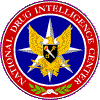ARCHIVED
![]() To Contents
To Previous Page To
Sources To Publications
Page To Home Page
To Contents
To Previous Page To
Sources To Publications
Page To Home Page

|
National Drug Intelligence Center Virginia Drug Threat Assessment March 2002 OutlookPowdered and crack cocaine will continue to represent the most significant drug threat to Virginia. Cocaine likely will remain the predominant drug problem in many of the state's population centers and will represent a greater threat than any other illegal drug to those areas. Crack cocaine will continue to be the greatest threat to inner-city neighborhoods, and violent crime associated with the distribution and abuse of crack will continue to be a serious problem in Virginia. Colombian and Dominican criminals groups, firmly entrenched as wholesale distributors of powdered cocaine in Virginia, are likely to remain the primary distributors of cocaine. However, Mexican criminal groups, which have increased wholesale distribution of cocaine in Virginia and elsewhere in the eastern United States, could increase their distribution activities in the state. Marijuana is likely to continue as the primary drug of abuse in Virginia. Marijuana will continue to be readily available throughout the state. Availability could be spurred by more in-state cultivation, particularly if growers continue to migrate to rural southwestern Virginia from nearby states. Mexican and Jamaican criminal groups with access to well-developed supply and distribution networks likely will remain the principal wholesale distributors of Mexican marijuana in Virginia. Local independent dealers and Caucasian criminal groups, who control most in-state cannabis cultivation, are likely to remain the principal distributors of marijuana produced in the state. Heroin likely will continue to be a significant threat to the Central Virginia and Tidewater areas. Retail quantities of high purity South American heroin will continue to be available and likely will continue to contribute to heroin-related deaths in the state. Heroin is attracting a new abuser population, especially among young adults who snort the high purity drug rather than inject it. Law enforcement reporting indicates that new heroin abusers are likely to abuse the drug in social venues where its presence had been previously uncommon, such as raves. ODDs, particularly MDMA, will continue to gain in popularity in Virginia. Law enforcement officials indicate that MDMA is an increasing threat to the Northern Virginia and Tidewater areas. MDMA seizures have increased substantially in those areas and there are no indications that this trend will change. The availability and abuse of MDMA at raves and in other social contexts is likely to increase. Diverted pharmaceuticals, especially OxyContin, will continue to pose a significant threat to rural southwestern Virginia. Crimes related to the diversion and abuse of OxyContin may remain a serious problem in this region, depending somewhat on the effectiveness of the plan by the Attorney General of Virginia and the manufacturer of the pharmaceutical. In addition, diverted OxyContin is becoming increasingly available in parts of central, northern, and eastern Virginia. Law enforcement officials report that middle-class individuals increasingly are abusing OxyContin, once predominantly abused by lower-income individuals. Methamphetamine likely will present a low but increasing threat to most of Virginia and remain a more substantial threat to the Shenandoah Valley, where distribution and abuse are likely to increase. Mexican criminal groups likely will continue to establish distribution networks in western Virginia. However, the methamphetamine threat to Virginia is likely to remain lower than that posed by other drugs.
|
End of page.